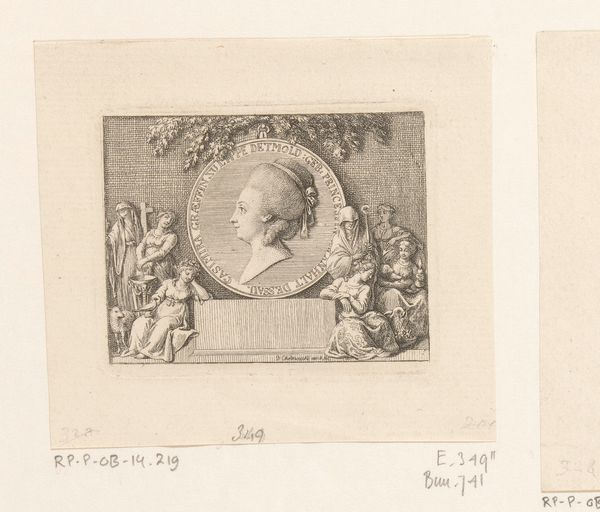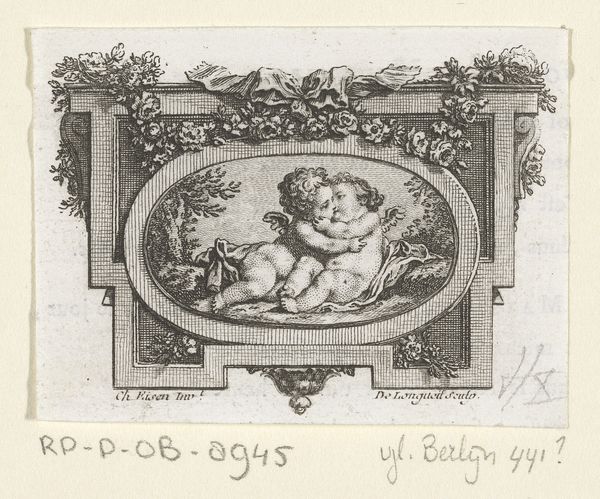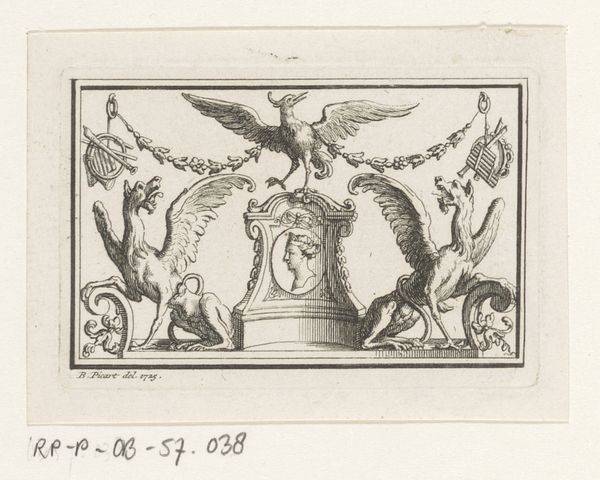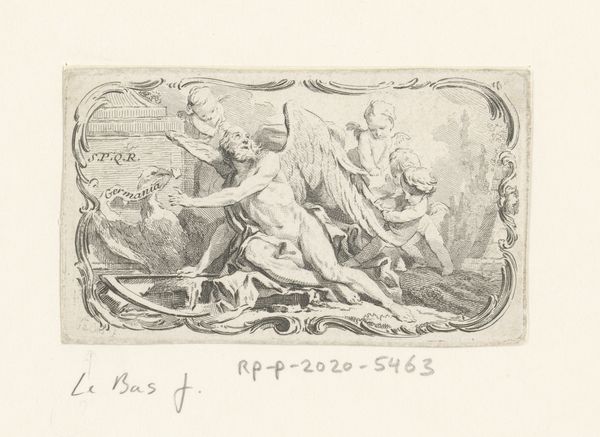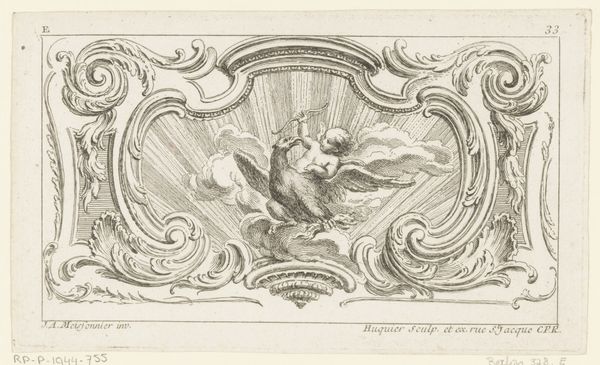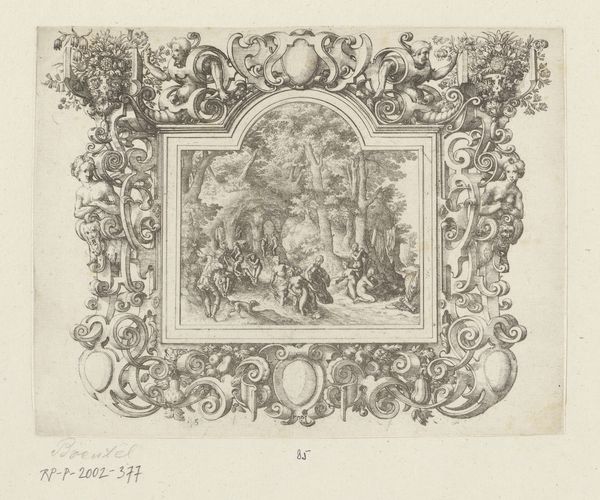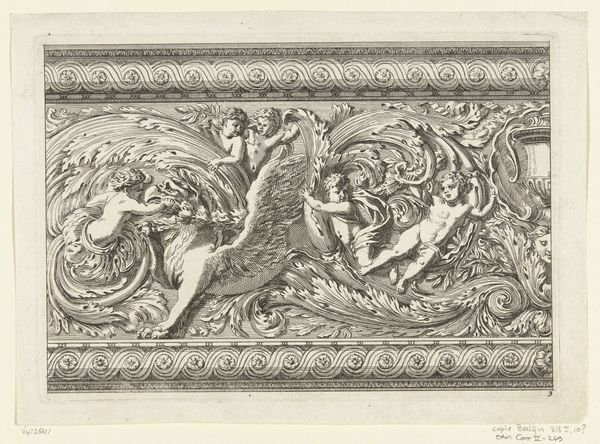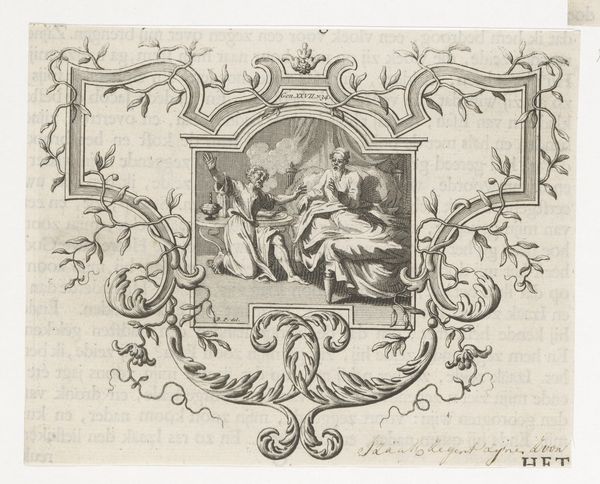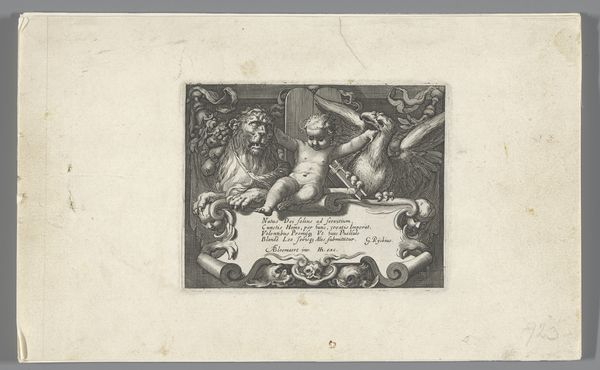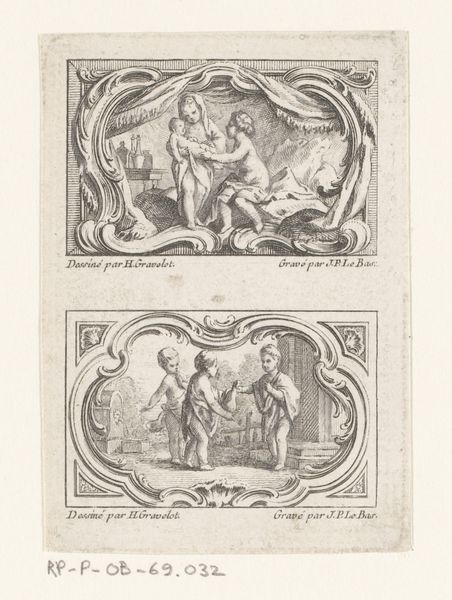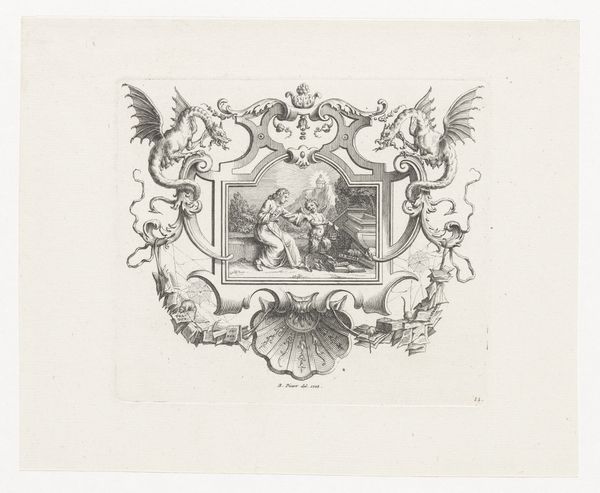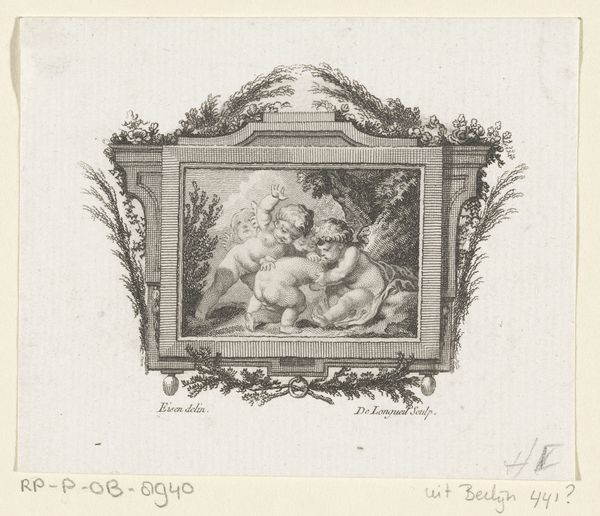
print, engraving
#
allegory
# print
#
figuration
#
line
#
engraving
#
rococo
Dimensions: height 52 mm, width 70 mm
Copyright: Rijks Museum: Open Domain
Editor: Here we have Joseph de Longueil’s 1763 engraving, "Vignet met twee putti.” It's incredibly delicate, with such fine lines. I'm struck by its idyllic and almost dreamlike quality, with the putti seemingly floating in this floral scene. What kind of symbolism might be at play here? Curator: This vignette offers a fascinating glimpse into the visual language of the Rococo era. Notice how the putti, or cherubic figures, are not merely decorative but symbolic. One slumbers peacefully, perhaps representing innocence, while the other seems to gesture towards a future awakening. Editor: An awakening to what, exactly? Curator: Ah, that's where it gets interesting! Consider the context: 1763. The Enlightenment is gaining momentum, ideas about reason and progress are taking root. The image may subtly suggest a transition from a state of naive innocence to one of enlightened awareness. Editor: So, it's not just a charming scene but a commentary on the changing times? Curator: Precisely. And the frame adorned with garlands, and doves often speaks of love, beauty, and transient pleasures -- things valued, but also questioned by Enlightenment thinkers. Does the embrace of Rococo’s themes hint at their impermanence? Editor: It's amazing how much can be conveyed through such subtle symbols. I’ll definitely look at 18th-century art with a different perspective now, searching for hidden meanings within seemingly lighthearted imagery. Curator: Indeed. These echoes reverberate through history. Recognizing them is half the battle.
Comments
No comments
Be the first to comment and join the conversation on the ultimate creative platform.

